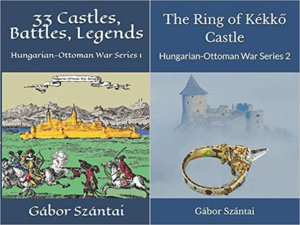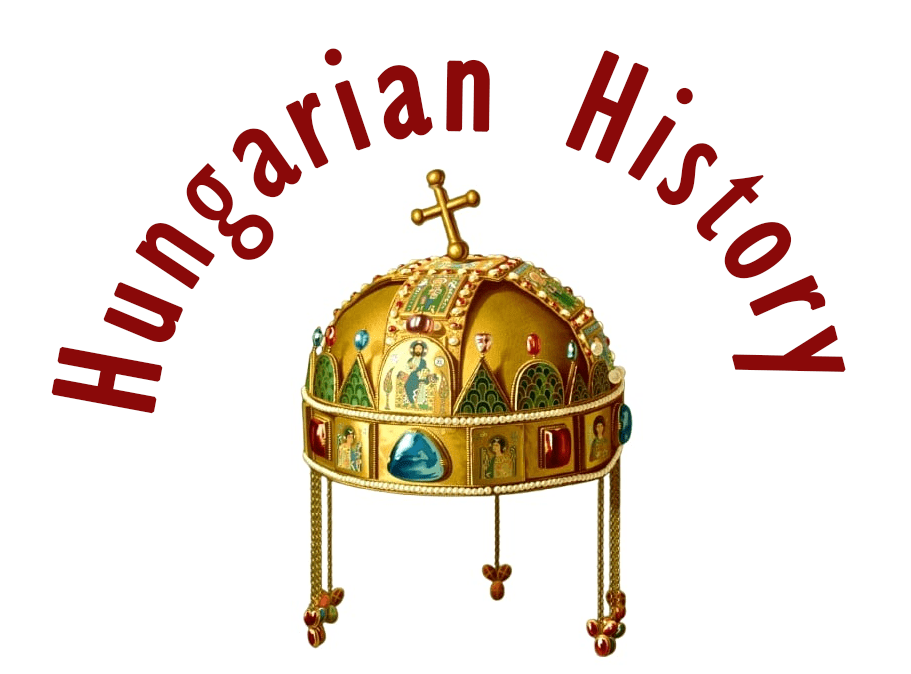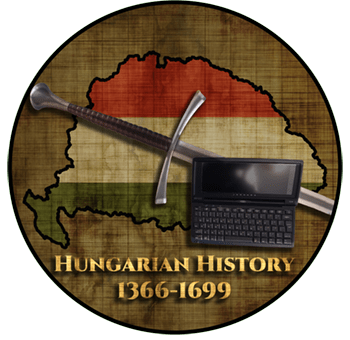
Hrussó Castle (Hrušovský hrad) is in Slovakia. It was built in the Kingdom of Hungary in the 13th century. The castle is located in Nyitra County, on the outskirts of the village of Skýcov, near Zsitvabesenyő.
Location: https://tinyurl.com/4a7wunra

The scenic ruins of Hrussó Castle are located north of Kistapolcsány on the steep 488-metre-high Skalka Hill. Its name comes from the Slavic word for pear tree. The castle was built around 1274 by the Palatine Csák Péter. In 1284, it was inherited by his son, the notorious “Trencsényi” Csák Máté. The castellan of Drégely and Privigye was László of Pécz’s clan from Hrussó.

After the death of Csák Máté, Hrussó became a royal castle. Around 1323, the castellan of Hrussó (“Hwrso / Hurussow”) was Vörös Beke, who attacked and plundered the estate of Kistapolcsányi Gyula, the Comes of Kistapolcsányi (dicti Rufi), and took the steward of his manor, Wloghi, prisoner. In a charter issued in 1343, Master Bedey is mentioned as the castellan of Hrussó (ancestor of the Sárói-Lévai Czech family), a post he held between 1330 and 1344.

On 21 February 1347, King Lajos I granted permission to Kistapolcsányi Miklós, master Gergely, brother of Miklós, and Endre, son of Endre, to wash gold in the Topolnycha stream in the boundaries of the royal castle of Hrussó (Hurusov) and Kistapolcsány. In 1352, Perényi Miklós was the castellan of Hrussó; in 1365, Lengyel Imre of Boriknik was the castellan of Hrussó. In 1369, King Lajos I. gave it to Palatine Oppelni László, who held it until 1375. Between 1382 and 1387, it was owned by Queen Mary, daughter of King Lajos I. In 1388, it belonged to Sáró Péter, who exchanged it with the king for Léva a few months later.

Around 1389, Chetneki György and Mihály received the castle of Hrussó from King Zsigmond. However, the king later exchanged the castle of Sáros for Hrussó and then Sáros for Saskő. In 1393, Hrussó was already in the hands of Palatine Ilsvai Leusták. From then on, the ownership of the castle became confused: in 1399, Saskő was returned to Zsigmond by the Chetneki family, who became again the owners of Hrussó, but the Ilsvai family also claimed it as their own.

In the unfortunate battle of Nicopolis (sub castro maioris Nykapolis), Sultan Bayezid captured Palatine Ilsvai Leusták. His children attempted to collect the huge ransom, so in March 1400, they pawned the castle of Hrussó, along with all its belongings, to Archbishop Kanizsai János and his brothers for 6,000 gold forints. Ilsvai never returned home; he died in captivity.

In 1402, László of Naples and his followers, including the Kanizsa family, tried to dethrone King Zsigmond. In 1403, Forgách Péter, later Comes of Nyitra, fought against the rebels against Zsigmond in the camp of Voivode Stibor. In 1402, on the king’s orders, he abandoned Stibor’s army to besiege the rebel-held Hrussó. Forgách had built a fortress opposite the castle, from which he was to conduct the siege. It was then that János, son of Kistapolcsányi Péter, arrived with a large force of armed men at the castle. Forgách’s men rushed out and drove the rebels away; when they returned, a serious fight developed, during which Kistapolcsányi was wounded and then killed.

His relatives wanted to bring a lawsuit against Forgách for this; in 1405, King Zsigmond commissioned the Chapter of Nyitra to investigate, which found out what had been said. The siege of Hrussó succeeded, and the king, during the siege of Esztergom on 4 December 1403, pledged the castle and its appurtenances to Forgách Peter until he could reimburse the costs of the blockade. It also obliged him to lead 300 horsemen to the royal army besieging Esztergom as soon as possible, for which he could charge 10 new forints per month for the care of 4 horsemen. Thus, Forgách Péter probably also participated in the taking of Esztergom.

In 1408, the sons of Palatine Ilsvai Leusták, György and Péter, and their daughters Ilona and Hedvig repaid the 6000 gold forints to the Kanizsai family in the convent of the crusaders of Székesfehérvár, who, namely, Archbishop János of Esztergom, Miklós and István, the sons of Kanizsai János, returned the castle of Hrussó and the other pledged estates to the four brothers.

In 1410, according to documents, the castle was again in the hands of the Chetneki family. In 1417, Lévai Cseh Péter complained to the Palatine that Zsigmond of Chetneki and Zepesi András of Hrussó and his son János of Hrussó had seized a serf and a falcon on the estate of Prohotha, and that the family members of Sythythkuthi Endre and Semberi Kis Gergely had been taken and robbed of everything. With the Chetneki family’s fall from power, Hrussó was returned to the king around 1420.

In 1423, King Zsigmond gave Sajógömör as a pledge to Nagy János of Pelsőc in exchange for 8375 gold and 2000 new forints. The amount, broken down into parts, shows more clearly the importance of the market town, as it includes the pledged amounts of Hrussó Castle and Böszörmény market town (4,400 and 3,975 gold forints), as well as an additional payment of 2,000 new forints. Hrussó appears to be underpriced, as in 1400, Archbishop Kanizsai János pledged it for 6,000 gold forints. In 1424, the sons of the deceased Pelsőczi Bebek János, Miklós and István, were registered as owners of Hrussó Castle.

In 1438, the Chapter of Nyitra reported to King Albert that Aba László and Csizi János, Pelsőci István and Miklós, the castellans of the castle of Hrussó, with their named companions, had broken into the estate of the Paulinian monks of Elefánt at Velikapolia and had carried off four horses, grain, and two serfs of the Paulinian tenants to the castle of Hrussó.

Before 1446, the poorly guarded Hrussó was occupied by Bohemian mercenaries, perhaps Giskra’s men. Pelsőczi István and Miklós complained to the lords of the country that their castellans, Putnoki János and Tornalljai Mihály, had fraudulently handed it over to foreigners. Hrussó was redeemed from the occupiers, namely Magnus Gergely, Hopsich Dénes, Nikel, and Radno György, by (Kis) Tapolcsányi Kelemen on 10 January 1446 before the convent of Garamszentbenedek for 1000 gold forints. Kelemen had kept the Bohemian guards of the castle, and now he was plundering the area. According to a charter issued by King László V in 1453, Kistapolcsányi asked the Bebeks for the sum spent to redeem Hrussó (“Rwsso”), but they did not redeem the castle from him.

According to a charter of 23 September 1453, Újlaki Miklós, the Transylvanian Voivode and Ban (Duke) of Macsó, as the captain of the Highlands, made a pact with Kistapolcsányi Kelemen that he was obliged to give his soldiers lodging in the castle. Kistapolcsányi transferred the castle to his son-in-law, Farkasdi Miklós, before 1458.

On 4 April 1458, the Chapter of Nyitra confirmed that Moys Péter of Hrwso Castle and his wife, the widow of Farkasdi Miklós, had returned the castle to him, because they had assumed their debt to the widow of Kistapolcsányi Kelemen. All these transactions took place between the Kistapolcsányi family and relatives, without royal approval.

In 1467, King Mátyás donated the castle of Hrussó, along with its appurtenances, and Zelchen in Nyitra County to his courtier, Zelcheni (Szelcsényi) Pál, whose wife was Dorottya, the daughter of Kistapolcsányi Kelemen. In the letter of donation, it is stated that the castle used to belong to the late Pelsőczi Bebek István, but due to his carelessness and negligence, in the past troubled times, when the Bohemian raiders ravaged the Highlands with fire and violence, it fell into the hands of the raiders several times, from where it also had to be taken out several times at great expense and effort.

In addition, György, the son of Bebek István, forgetting his duty of loyalty to the king, joined the rebel Bazini and Szentgyörgyi Count János and Szapolyai Imre, and because of his disloyalty, his estates were legally transferred to the king. Towards the end of the same year, Szelcsényi Pál was registered in the possession of the castle.

The Bebeks of Pelsőcz were not satisfied with the loss of the castle, and found support from Szapolyai Imre (whose wife was Bebek Orsolya). Eventually, Szelcsényi bought it from the Bebeks and Szapolyai for 12,000 gold forints in perpetuity.

Szelcsényi was on bad terms with his neighbours, and many of his excesses have been recorded. He must have had hostile relations with the Szerdahelyi family, because on 24 July 1475, Szerdahelyi Mihály and his family broke into the poorly guarded castle at night, killed Szelcsényi, and forced his wife and daughters naked out of the castle. According to the documents, they caused 10,000 forints in damage and tried to “give Hrussó into enemy hands and alienate it from the country”. King Mátyás had to reclaim the castle partly with arms and partly with money, which Laki donated to Kis Tamás.

Laki, on the other hand, lost the trust of Mátyás, because “we trusted much in his loyalty, we trusted and believed him much, and at last we caught him in countless incredible thefts and robberies of the money, silverware, precious things and other goods entrusted to him, which he publicly confessed in the presence of our councillors and our whole court.” The king took away Hrussó from him for his crimes, and donated it to Lábatlani Gergely, the governor of the archdiocesan estates of Bács, for 4,000 gold forints, by a letter of donation dated 27 October 1486.

Lábatlan did not own Hrussó for long; already in 1490, he sold it to Bajnai Both János and András. In 1492, Both János sold the castle to Verebélyi György, Simon, and Pál, but this was protested by the widow of Both András, as well as by the widow of Szelcsényi Pál and the Kistapolcsányi family. After this, the king wanted to have Erzsébet, the daughter of Szelcsényi Pál, incorporated into the estate of Hrussó, but the Verebélyi family prevented this several times. The castle of Hrussó remained in the hands of the Verebélyi brothers until 1502, when, on 14 July, they sold it before the Buda Chapter for 5,200 forints of gold to the Radnai Holi (Holy) Pál of Nagyszombat and the Ákosházi Sarkány Ambrus, Comes of Pozsony, and their heirs, in “great and grave need”.

The castle of Hrussó changed hands again on 28 April 1504. Holi and Ákosházi sold it to their father-in-law, Salczer Lőrinc, Captain of Trencsén and Bajmóc, and his sons, for 5200 gold forints, on the same terms as they had bought it from the Verebélyi brothers. The Kistapolcsányi family protested against the incorporation. In 1517, after a series of lawsuits, the Chapter of Pozsony introduced Zabláthi Salczer Lőrinc, his wife, and sons into the estate of Hrussó without any protest. In 1530, Zabláthi (Hrussói) Jeromos’s widow, Borbála, and her sons were the owners of the manor.

In 1534, King Ferdinand I. took Hrussó away from the Zabláthy Hrussói János, who supported King Szapolyai and gave it to Török Bálint. Hrussói changed sides later that year and was allowed to keep the castle. Hrussói then returned to the allegiance of King Szapolyai, so King Ferdidnánd took the manor again and gave it to the Zelchen (Szelcsényi) family. In 1535, the castle must have been in the hands of Zabláth Hrussói, because on 1 April, he and his men attacked Kistapolcsány, which was then in the possession of Kistapolcsányi György and Tamás.

The castle was set on fire, and Kistapolcsányi László was shot with an arrow, while Ferenc, along with several others, was drowned in flames and smoke. The wife of György, Maria, was abused and dishonoured. Kistapolcsányi György and Tamás, together with many peasants, were escorted by Turks to the castle of Hrussó and then to the monastery of Turóczi. Decades-long lawsuits between the Hrussos and the Tapolcsányi were launched. In 1543, the Forgáchs, Kistapolcsányi Tamás and György hired 40 infantry riflemen from the Borderland to surprise Hrussó Castle, capture it, and kill Hrussói János. Three of the riflemen were captured by Hrussói and imprisoned in a dungeon.

In 1545, Hrussói János pledged the castle of Hrussó with all its accessories to Podmaniczky János and Rafael, and exchanged it for the castle of Lednice, against which Kistapolcsányi Tamás protested before the Chapter of Nyitra. In 1546, Nagyberzenczei Gáspár was the Podmaniczky’s castellan in Hrussó. In 1549, King Ferdinand gave Hrussó to Kistapolcsányi Tamás and György while the Podmaniczky family was still in the castle. Finally, in 1550, the Esztergom Chapter gave possession of the Hrussó castle and its belongings to the Kistapolcsányi family.

Interestingly, the king took over Hrussó in the meantime, and for two years it was a royal castle. On 09.11.1554, the King ordered Conrad Waal von Aurachn to surrender Hrussó Castle to the Hungarian Chamber, which King Ferdinand pledged to Kistapolcsányi György and Thomas, and their son heirs for 4200 forints on 1 November 1554.

In 1559, King Ferdinand gave the castle of Hrussó to Forgách Ferenc, Bishop of Várad, who had done great service to his side since his coronation as King of Rome. However, for reasons unknown at the time, the king’s donation was not carried out, for it was not until 1563 that he, together with his brothers Imre and Simon, received Hrussó in exchange for a pledge of 6,000 forints.

However, Kistapolcsányi Tamás refused to hand over the castle, and even justified his right to it with documents, so the castle never became the property of the Forgáchs. In 1563, an investigation in the castle revealed that, apart from the old castle-mayor Farkas, there were four infantrymen, a baker, a key-keeper, and a guard. In 1575, the Kistapolcsányi family shared the castle of Hrussó. In 1589, King Rudolf granted the royal right to Hrussó Castle to Kistapolcsányi János and Imre.

In 1596, Tapolcsányi János made his last will before the convent of Garamszentbenedek. He left all his property rights concerning the castle of Hrussó and Kistapolcsány to his son Pál and his daughter Ilona, and after their death to his wife, Cziráky Zsuzsanna.

Ilona, the sister of Tapolcsányi Pál, married Enyingi Török István, the captain of Pápa. The first thing her husband did after his brother-in-law’s death was to take Hrussó Castle and Kistapolcsány with its belongings. The royal treasury had already protested against this in 1611. Despite this, in May 1612, Török appointed Tajnay György as the castle captain of Hrussó and Kistapolcsány. After the death of Tapolcsányi Ilona, the royal treasury recovered Hrussó from Török István in 1615. The Hrussó-Kistapolcsány manor was donated by the King to Baron Hethesi Pethe László (President of the Hungarian Chamber) and his wife Kapy Anna by a donation letter dated 16 January 1616, with succession rights for both genders.

In 1624, the younger son of Transylvanian prince Rákóczi Zsigmond, Pál, acquired the castle together with Kistapolcsány by the hand of Pethe Anna. A census of the castle in 1637 found the following armament: ‘There was a bad howitzer on the castle’s upper bastion. On the rounded bastion near the gate, there was a small iron howitzer. There were large and medium hook guns, 16 of them. Besides, there was a hook gun in bad condition.” The last building works on the castle were carried out by Rákókzi László, who finished it in 1662. After his death, it was inherited by his daughter Rákóczi Erzsébet.

The destruction of the castle took place on 5 August 1708. After the battle of Trencsény, Heister’s troops assaulted the castle, which was defended by a gatekeeper, a guard, and five Hajdú soldiers, and set it on fire and damaged its walls with explosions. It is said that they were looking for the treasures of Rákóczi Erzsébet that had been walled up in 1697.

The castle was never rebuilt, and the owners found the castle in Kistapolcsány more comfortable. The engraving from the first half of the 1800s and the drawing from the second half of the century show how much the castle had deteriorated over the course of 50-60 years. A minor restoration was carried out in 1929-30, when the strange pillar was built to support the circular bastion. After that, the castle started to deteriorate again, but since 2004 and still today (2022), work is ongoing on the castle.
Source: Szöllősi Gábor http://www.varlexikon.hu

Dear Readers, I can only make this content available through small donations or by selling my books or T-shirts:
Please, support me with a coffee here: https://www.buymeacoffee.com/duhoxoxa
You can check out my books on Amazon or Draft2Digital; they are available in hardcover, paperback, or ebook:
https://www.amazon.com/dp/198020490X or at https://books2read.com/b/boYd81

My work can also be followed and supported on Patreon: Become a Patron!http://Become a Patron!
Become a Patron! Donations can be sent by PayPal, too: https://shorturl.at/qrQR5


https://hungarianottomanwars.myspreadshop.com/all
Subscribe to my newsletter here: https://shorturl.a
Here are more pictures of Hrussó Castle:
















































